First look: The new Shimano GRX Di2 12-speed gravel groupset
Wireless shifting arrives for the drivetrain as do other new features that will help you take on rough routes
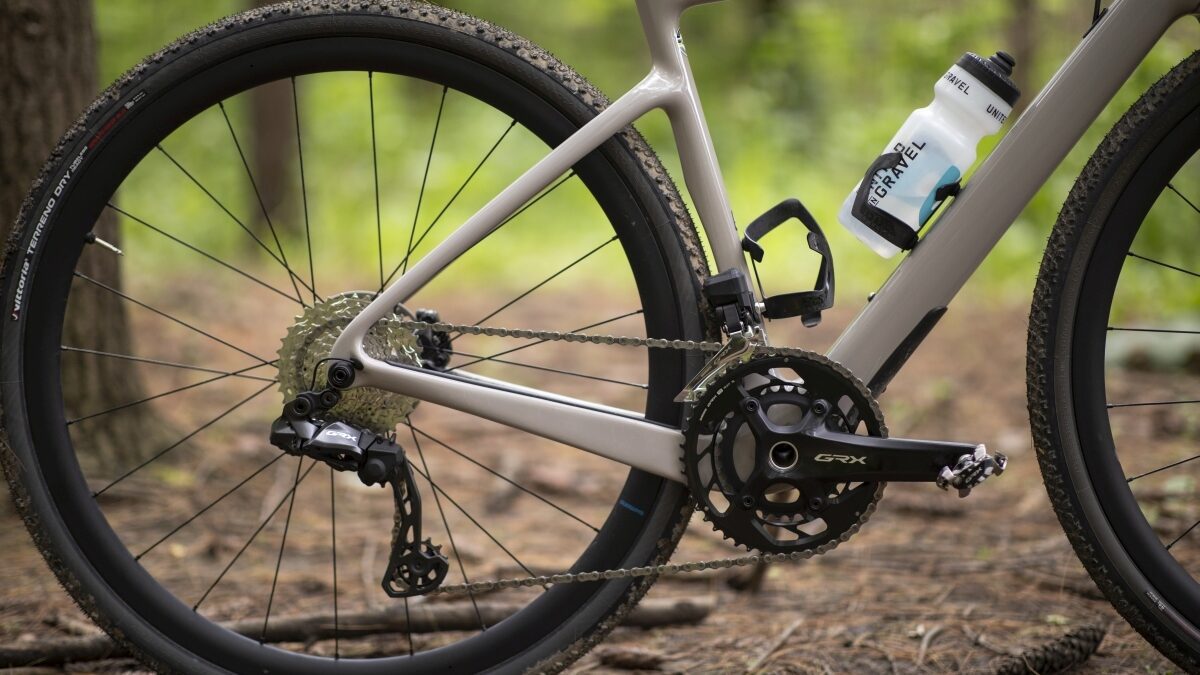 Photo by:
Nick Iwanyshyn
Photo by:
Nick Iwanyshyn
The new Shimano GRX Di2 gravel groupset is here. When Shimano updated its gravel-specific sets to 12-speed in August 2023, the company actually launched not one, but three groups. A 2-by option, and two 1-by options with different gear ratios and rear derailleur cages. But Di2 was not among them, a conspicuous absence from the company that first made electronic shifting for bikes viable. With even Shimano admitting at the time that Di2 was in the works, it was only a matter of when, not if, the 12-speed electronic set would make a debut.
This latest GRX Di2 is very much an evolution rather than revolution, building on both the previous 11-speed generation of GRX, and the current 12-speed road groups. This latest update brings much of the function and feel of Shimano’s road Di2 groupsets to GRX, adapted with gravel-specific features.
Shimano GRX Di2 gains parity with road groups
The most obvious change to GRX Di2 that is it is now 12-speed. More important than an extra cog though, is that it brings with it a slightly wider range 11-36 cassette. Where previously Shimano’s 2-by GRX setup only went up to 34, the new cassette offers slightly lower gearing. However, given Shimano’s notoriously conservative officially approved specifications, there is a good chance it will work fine with slightly bigger cassettes for even lower gearing. It is still paired with your choice of either 48/31-tooth chain rings up front, or a 46/30-tooth for extra-low gearing.
The entire Di2 setup has also been updated, consistent with Dura-Ace, Ultegra and 105 Di2. The new shifters are wireless, powered by two coin cell batteries in each shifter, but the two derailleurs are still connected to a central battery. Shimano maintains that this arrangement gives the benefit of a wireless cockpit, with minimal fishing of wires, while maintaining longer battery life.
This arrangement also means that much of the 12-speed road groupset components and GRX components are largely interchangeable. If you prefer the shape and feel of the road Di2 shifters, and want to use them on your GRX Di2 gravel bike, you can. Or if you want to run GRX’s clutch rear derailleur on your Ultegra Di2 equipped road bike, you can do that, too. The only caveat is that the crankset and front derailleur must be paired within the same family, owing to chainline differences between GRX and the road groups.
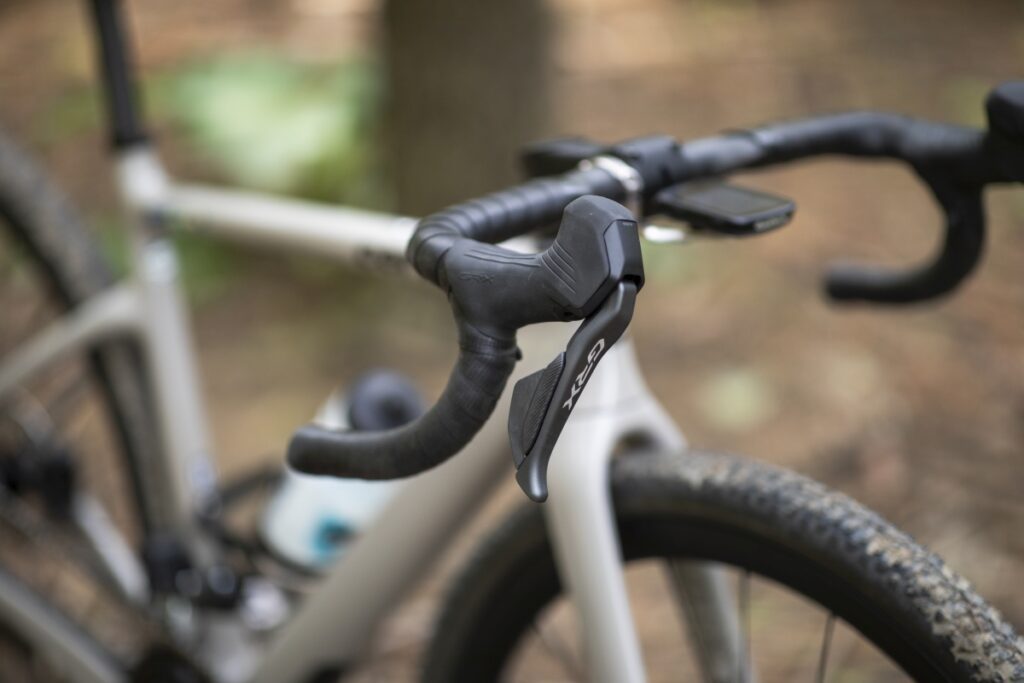
Front Shift Next
The most notable change is actually not in the hardware but the software. With this GRX update, Shimano is launching a new feature called Front Shift Next. Before, you would hit one paddle on your shifters for shifts to the big ring and another to shift to the small ring. With Front Shift Next, you can now designate a single paddle or button dedicated to front shifting. So you’d hit that one paddle to go from big chainring to small and back again. Not unlike SRAM’s AXS system, where the same action—hitting both shift levers at the same time—will execute a front shift in either direction. With Front Shift Next however, you only hit a single dedicated button or paddle.
This feature simplifies shifting somewhat, and frees up the other button for you to assign to whatever else you want it to do, such as control your Garmin or to put Di2 into adjustment mode, allowing you to adjust your derailleur trim on the fly. Another application would be for adaptive athletes who are only able to work the controls with one hand, and need to have all the controls available in a single shifter. If you were hoping to control a dropper post with that freed up paddle, you are out of luck. There are no compatible wireless droppers available currently.
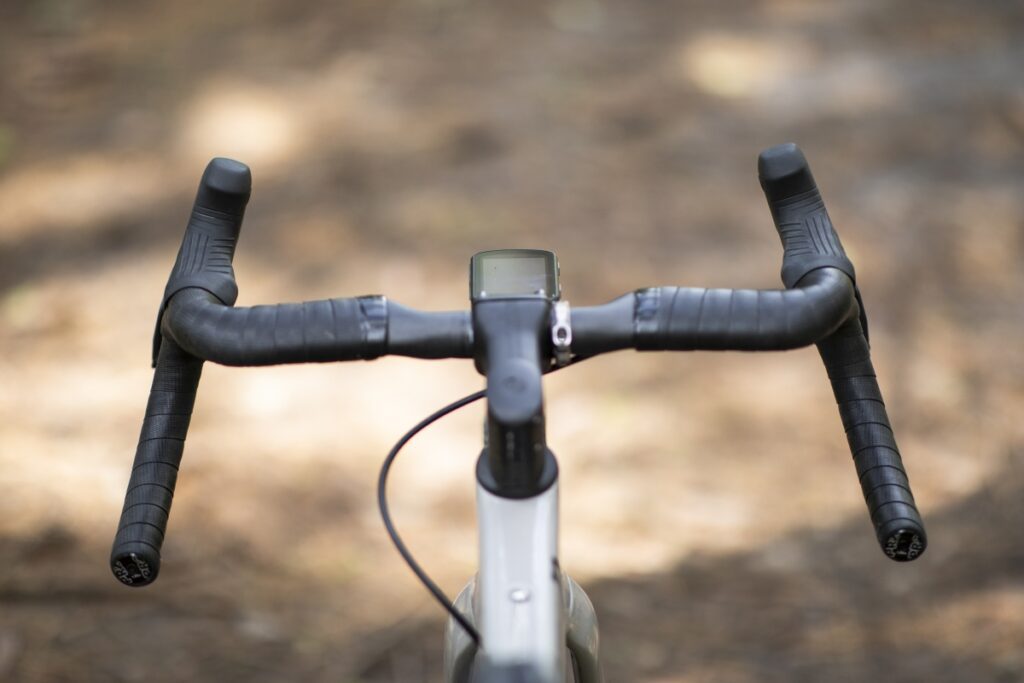
In addition to Shimano GRX Di2, Front Shift Next will also be available to owners of 12-speed Dura-Ace, Ultegra and 105 Di2 as a firmware update. If you want this feature, you will have to head to your local bike shop, as firmware updates for shifters require a hardwire connection to an SM-PCE02, a shop diagnostic tool. Once you have done that, you can customize to your heart’s content with Shimano’s E-Tube app.
What about 1-by?
I’ve talked a lot about shifting, chainrings in particular because there is currently no 1-by option for 12-speed GRX Di2. When asked, Shimano’s road and gravel brand manager Nick Legan told me 1-by is coming. “Shimano, especially with GRX, is about giving people options. You can see that from GRX mechanical. So we are not holding back on 1-by because we don’t think it’s a thing,” he said. Legan went on to elaborate, “If you look at what we launched prior to this, you can see why we launched this first, much of the work was already done.” But when and what will it look like? Legan wouldn’t say. In the meantime, if you want to run 1-by, and you want Shimano, there are two mechanical options. (To hear more from Legan and road and gravel product manager Dave Lawrence, check out the Canadian Cycling Magazine Podcast.)
Shimano GRX Di2 shifters
The shifters look very similar to the previous 11-speed generation, but it’s the component that has received the most changes. With the increasing popularity of flared handlebars, the new Shimano GRX Di2 hoods are now a bit rounder and slimmer than the previous, which accommodate a wide variety of degrees of flare, enhancing comfort on long rides. The knobs on the front of the hoods are a bit wider than before, to house the batteries needed for wireless connection. Since you don’t hold those parts of the hoods, they don’t affect how they feel in your hands.
Comparing the new GRX Di2 hoods to the Ultegra Di2 hoods on my road bike at home, despite how different the two look, the feel of both to my hands are incredibly similar. The width and roundness of the hoods are virtually identical when I hold on to them, with the GRX Di2 hoods offering just a bit more space underneath, no more than a millmetre or two, to comfortably wrap three fingers around.
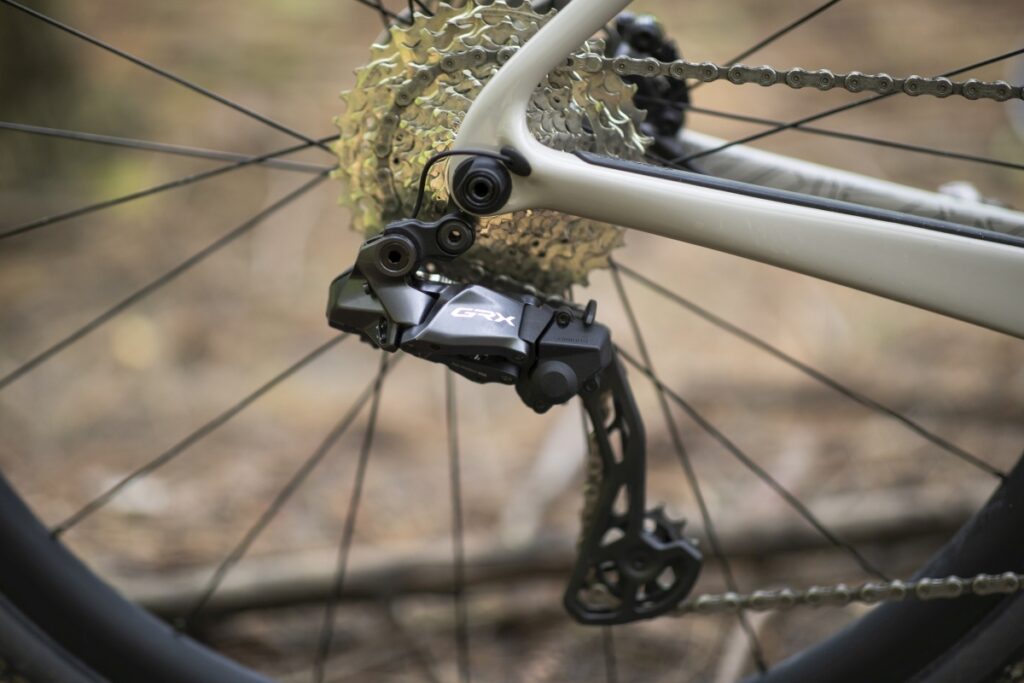
Shimano GRX Di2 rear derailleur
Similar to Shimano’s road groupsets, the rear derailleur now houses the brain of the drivetrain, and the port where you charge the battery. The charge cable is also the same one used for the road rear derailleur. Otherwise, aside from the increased capacity to handle slightly bigger cassettes, it is pretty similar to before. It still features Shimano’s proven Shadow+ clutch mechanism found on the previous GRX and MTB derailleurs.
The front derailleur
Aside from compatibility with the thinner Di2 wires for 12-speed systems, the front derailleur is largely a carryover from before.

Shimano GRX Di2 crankset
The crankset is exactly the same as the 11-speed generation, but paired with new 12-speed specific rings, which means no need to change if you are upgrading from 11-speed or mechanical GRX. Compare with the road crankset, the crankset still pushes the chainline outboard by 2.5 mm, for better clearance with the rear tire.
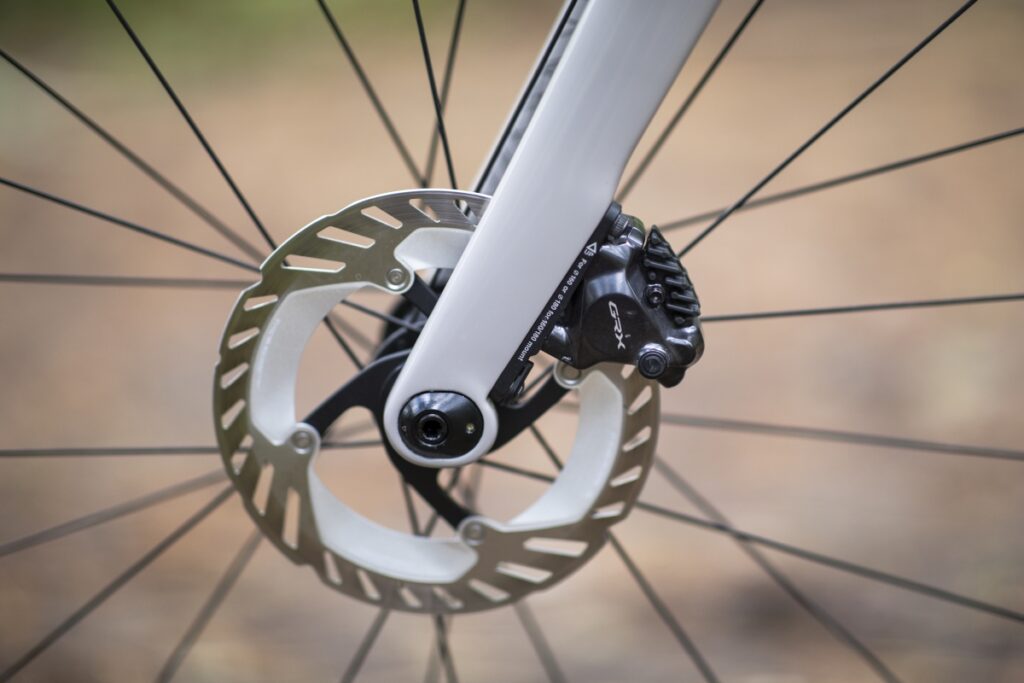
The brake calipers
The brake calipers are the same as those used for mechanical 12-speed, and in fact Ultegra 12-speed except for the badging. Thus, the new calipers feature the same 10 per cent improvement in clearance you’ve seen with updates to road groups and compared with the old GRX calipers. There’s a more accessible bleed port, too.
How does the new Shimano GRX Di2 groupset ride?
I had the opportunity to go to Carson City, Nev., where Shimano hosted a launch event for Shimano GRX Di2. In addition to a group ride with other assembled media, I also got to race Stetina’s Paydirt, a unique timed-segment gravel race, similar in format to an enduro, which featured plenty of climbing and descending on rocky, chunky “roads,” sections of sand traps, some smooth flowy MTB trails, and even a little bit of pavement sprinkled in there to connect it all. Basically a bit of everything when talking about gravel these days.

If you have spent any time on the various Shimano Di2 systems, the new GRX will feel pretty familiar. Shifts are executed with robotic precision, everytime. Front shifting in particular is impressively fast, which I particularly appreciated on Brunswick Canyon, the first segment of Stetina’s Paydirt, at approximately 30 km, featuring a long grinding ascents for the first half, followed by a fast but oftentimes rough descent. On the climb, I would shift constantly on the back, to maintain my cadence and traction as the grades changed, to get over any little sharp rise or take advantage of any slackening of the grade.
At one point, after the third or fourth stream crossing in a row, a racer near me let out an audible curse, and I commiserate by sharing, “Yeah, it’s crazy how we are plowing into these streams blind, eh?” To my surprise, he responded, “I am not worried about going over the bars, it’s my chain I am worried about!” At that point, I realized my drivetrain was also making terrible noises from all the dirt and water picked up from the crossings, but my GRX drivetrain hadn’t missed a beat or a shift.
Eventually, my drivetrain quieted down and I crested the top, with the wide vista of the Eastern Sierra appearing before me. I slammed it into the big ring, and raced down the rough descents alternately gasping at the scenery around me, and refocusing on picking the right lines. On many of the small rises peppered throughout the descent, I would just shift into the small ring on the trough, climb over and shift back into the big ring at the top and continue on my way. Shimano GRX Di2 again executed every shift on command, without drama or a dropped chain.

The new rounded hoods are a big improvement in my hands. I’ve never been a big fan of overly flared bars, because I’ve found they place the edge of the hoods at an awkward angle. And most of my time is spent on the hoods. These new hoods fix that. I do find the ribs on the hood, for improved grip, are a little too good at their job, a little too aggressive for my liking. Enough that I want to wear gloves with the GRX hoods, while I can comfortably go barehanded with Ultegra shifters. Braking from the hoods is also very similar to my Ultegra equipped road bike, with progressive feel and good power. No reall surprise given the calipers are the same.
I’ve only had a brief time on the new GRX Di2, and look forward to longer term testing back here at home in the coming months. But with so much in common from existing 12-speed mechanical GRX and road Di2 groupset, I think it is safe to say this new Shimano GRX Di2 groupset is a lot like Ultegra Di2, but make it gravel.
Shimano GRX Di2 12-speed groups and components are available at Shimano dealers now.
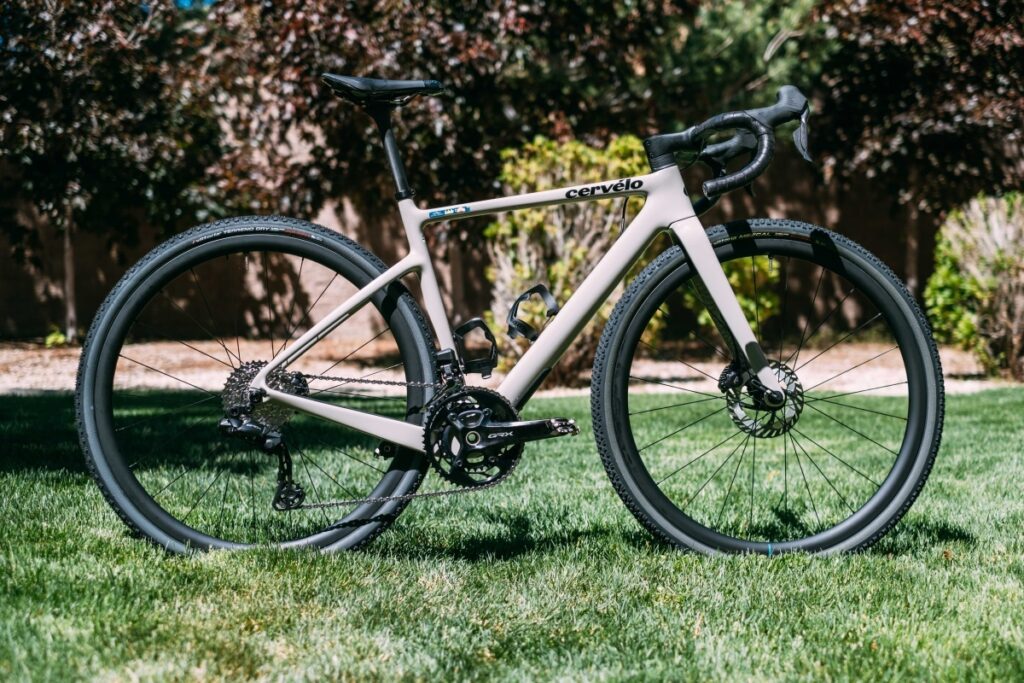
Canadian pricing and weights for Shimano GRX Di2
| Shimano GRX Di2 component | Price | Weight (g) |
|---|---|---|
| A pair of ST-RX825 shifters, BR-RX820 brake calipers, and SM-BH90 hyraulic hose | $1,480 | 810 |
| Rear derailleur, RD-RX825 GRX | $540 | 310 |
| Front derailleur, FD-RX825 GRX brazed-on type | $280 | 142 |
| Disc brake rotor, RT-CL800, 160 mm with lock ring | $85 | 228 |
| Cassette, CS-HG710-12, 11-36 tooth, | $120 | 391 |
| Chain, CN-M8100, HG 12-speed with Quick-Link | $71 | 247 |
| Electric wire, EW-SD300, 900 mm | $41 | 7.25 |
| Electric wire, EW-SD300, 1200 mm | $42 | 7.25 |
| Battery, BT-DN300 | $245 | 53 |
| Charging cable, EW-EC300 | $66 | 7.25 |
| Crankset, FC-RX820-2, 172.5 mm, 48-31 tooth | $330 | 7.25 |
| A pair of limited edition – GRX branded/United in Gravel Design M8100 pedals | $190 | 342 |
| A pair of WH-RX880-700C wheels with HGL2 freehub | $2,130 | 1,397 |
